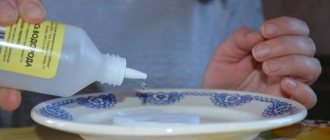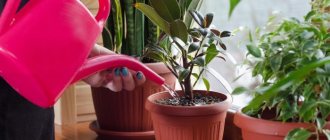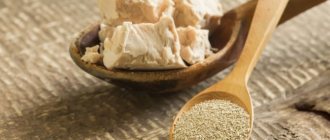What can we do to ensure that our favorite flowers on the windowsills are green, beautiful, and blooming wildly all year round? And the secret to a luxurious indoor flower garden is banally simple: the plants need to be well fed. You and I eat three times a day, so flowers need a varied diet.
Moreover, you can use homemade fertilizers for indoor flowers, which every housewife has, and it is not at all necessary to buy them in the store. One such remedy is feeding indoor flowers with aspirin. Aspirin - acetylsalicylic acid - is sold in every pharmacy at an affordable price. Few people know that it can be used not only for its intended purpose - for therapeutic purposes, but as a folk remedy for revitalizing, stimulating the growth and formation of buds in indoor plants.
Using hedgehogs to process potatoes
Types of seedling cassettes and their use
Hazelnut - how it grows and blooms, growing a nut in the garden
How is aspirin useful for flowers?
Aspirin for indoor flowers is used in a wide variety of situations when you need to help house plants:
- The leaves are falling;
- New buds do not want to form;
- The appearance of home flowers began to deteriorate;
- After a stressful situation in the plant: transplantation or illness;
- For antifungal treatment.
Advice: please note that deterioration in the condition of flowers may be the result of improper care, disease or pest attack. In such cases, you need to take appropriate measures: aspirin alone is not enough.
Foliar feeding
Let's define once again what aspirin does for indoor flowers. First of all, it is a means of boosting plant immunity. Thanks to it, flowers can successfully protect themselves from pests and diseases, and recovery will be faster and easier.
There are two options for using tablets. The first is watering at the root. But since you often want to save green mass that has suddenly begun to die, spraying is best. Aspirin for indoor flowers is used when carrying out foliar feeding. To do this, one tablet should be diluted in 0.5 liters of water. You can spray the leaves and buds, from where the product is absorbed through the stomata.
When to feed indoor flowers
If your plant has become elongated, the stems have become thin, if growth has stopped or slowed down, the leaves have turned pale, light spots have appeared on them, the plant refuses to bloom, then most likely it does not have enough nutrition.
But there is no need to bring the flowers to such a terrible state; they need to be fed regularly.
Already in March, when the sun begins to peep through the windows more and more often and the flowers begin to grow, you should start feeding them once every two weeks. And continue feeding in this mode until October.
How does aspirin work in plants?
When stressed, plants themselves produce small amounts of salicylic acid. This amount helps plants cope with insect attacks, drought, nutritional deficiencies and disease. The component helps strengthen the plant immune system. There is real science behind the claims. For example, the US Department of Agriculture found that salicylic acid causes an enhanced immune response in plants of the nightshade family. The increased response helped prepare the plant for attack by microbes or insects.
Feeding indoor flowers with sugar
Almost any indoor flower responds well to the addition of glucose, which in sufficiently large quantities is used to form molecules and ensures normal development of the plant.
Using sugar fertilizer is very simple: you simply scatter grains of sand over the surface of the soil and water it, or once every 30 days add sweet syrup made from one teaspoon of sugar and 1 liter of settled water to the flowers. Ficuses and cacti will be especially grateful for such fertilizer.
Prevention of fungal diseases
Fungal diseases are a common occurrence in houseplants. Infection with spores occurs through soil or tools that have not undergone preliminary disinfection.
Signs of damage become noticeable on the green part of the plant and can threaten its death. To avoid such an outcome, do not forget about timely prevention, in which aspirin is considered an excellent assistant. It is best to start with a small dose, which can then be increased. Acetylsalicylic acid in this case increases the resistance of plant tissues to bacterial infections.
Aspirin helps save house plants from wilting and prolong their life. They will recover more easily after soil waterlogging, freezing or illness. This budget product also increases the resistance of flowers to adverse environmental factors and numerous pests.
Fertilizing indoor flowers with yeast
It is recommended to fertilize indoor flowers using yeast three times a year: with the arrival of spring (when moving to another place of growth or just for good growth), in summer (in order to improve the quality of flowering) and in autumn.
To get the most positive result, you can supplement the yeast with potassium and calcium hidden in the same ash.
A one percent yeast extract will look like this: 10 g of live yeast must be poured with a liter of water and completely dissolved, then water the plants once a year (preferably in the spring).
A solution consisting of 200 g of yeast and 1 liter of water, which after infusion is additionally diluted in 10 liters of water, is well suited as an alternative option for feeding.
How to keep flowers in a vase longer than roses?
Roses are special flowers that require special care. They are stored for quite a long time, but certain rules must be followed. First of all, as soon as you bring roses home, you need to pay attention to the temperature of the room and the weather outside.
How to keep flowers in a vase longer than roses:
- If you purchased roses in the cold, do not rush to bring them into a warm room and put them in water. Leave them in a cool place. This could be a balcony or a cellar. Keep the roses in such conditions for about an hour so that they become accustomed to the room temperature.
- Only after this do you take it into a warm room. Be sure to pick off the leaves below. They should not come into contact with water. In addition to the leaves, the thorns must also be cut off. Be sure to cut the stems at an angle, about 3 cm.
- It is also worth cutting not at a right angle, but at about 45 degrees. Be sure to place roses in water at room temperature, which has settled or filtered. Twice a day, add a few ice cubes to the water to prevent the growth of microorganisms.
- The stems of the plant cannot be immediately immersed in cold water, because adaptation is necessary. Be sure to add sugar and vinegar to the liquid in which the roses are standing. For a liter of water you will need 20 ml of vinegar and 20 g of sugar. Be sure to add an aspirin tablet if you don't want the smell of vinegar to fill the room. If these remedies are not available, use an activated carbon tablet.
- Every day you need to change the water and cut off the ends of the stems. Despite the fact that roses love cool weather, they must be placed in a room with a temperature of 25 degrees. It is necessary to reduce the water temperature with the help of ice cubes, which are not added all at once, but one at a time. Be sure to spray the buds with a spray bottle throughout the day.
Assembling a bouquet
Fertilizing indoor flowers with ammonia
This is another “pharmacy” fertilizer. Ammonia is a good fertilizer; plants easily absorb it. Because of this property, it can quickly help plants with nitrogen deficiency. Its other effects on plants: restorative, revitalizing. Typically, watering with ammonia is carried out when the plant begins to wilt. Ammonia disinfects the soil and also destroys fungi and various insect pests.
How to use ammonia for fertilizing? To water plants, you need to add a teaspoon of ammonia to a liter of water. After such watering, within a few days the plants will turn green and begin to look better.
How to preserve flowers in water?
In order for the bouquet to be preserved in water for a long time, you need to pay attention to its freshness at the time of purchase. Most buyers, out of ignorance, purchase unopened buds, believing that they can stand in water for a long time. This is incorrect, since such plants are immature, and in a vase with water they are no longer able to fully bloom.
How to preserve flowers in water:
- Such bouquets fade even before the buds bloom. To prevent this from happening, choose half-opened buds that can adapt to home conditions. They are mature, so they will last longer.
- The stem should have no obvious changes in color, a uniform green tint. You need to pay attention to the bud. Feel it with the tip of your index finger and thumb. It is necessary that the bud at the base is very dense, but not flaccid, loose or soft.
- It is the density that indicates that the plant contains a lot of water and juices, so the flower will stand in water for a long time. You also need to pay attention to the cut line. If there are dark inclusions or mucus at the tips, this indicates the processes of fermentation and rotting. Accordingly, such a bouquet may not last long due to the fact that rotting processes could begin inside.
Roses
Feeding indoor flowers with ash
Ash contains many useful elements, such as potassium, magnesium, phosphorus, zinc, iron and sulfur. Therefore, it is rightfully considered one of the best. To prepare the ash solution, 1 tbsp. A spoonful of ash should be poured into 1 liter of hot water and left for 1 week, stirring occasionally. Watering with this solution is once every 10 days.
But this feeding cannot be used often: a couple of times a month will be enough. More frequent watering will lead to an excess of nitrogen in the soil.
And all these wonderful ways will help revive indoor flowers and really work!
What should you not put?
Let's look at what you don't need to add to the water to keep your roses fresh:
- Pure alcohol, as well as alcoholic drinks (can cause plant burns).
- Washing gels, liquid detergents and disinfectants (contain a high concentration of aggressive substances and can cause poisoning and death of flowers).
- Sugar in large quantities (more than 1-2 teaspoons): bacteria will multiply faster in an environment that is too sweet.
What don't roses like?
Cut roses do not like close proximity to other types of flowers. Although some people like different types of bouquets. Roses prefer solitude. While roses that have just been cut from a bush can be revived, weakened flowers cannot. If they have wilted, they can no longer be given their former freshness. You can only improve their appearance a little. How to extend the life of roses? To do this, place the flowers on newspaper and spray their stems well. Then the flower or the entire bouquet is completely wrapped and placed in cool water for three hours. This procedure is carried out at night every day.
Everyday care
A cut flower needs daily care, which consists of the following:
- First you need to select a container. For a bouquet of three to five roses, an oblong vase with a narrow neck is better suited. For stability, the base must be heavy. A wide vase is more suitable for a lush bouquet.
- How to extend the life of roses in a vase? Flowers are best preserved if they are placed in opaque vases. In this case, microbes will not multiply as intensively.
- So much water should be poured into the vase so that the stems are immersed in it by only a third of their length.
- Every day you need to change the water in the vase and add a little nutrients and disinfectants every time.
- How to extend the life of roses? To do this, changing the water, thoroughly wash the vase, rinse the stems and renew the cuts.
- Regular spraying is mandatory. Just be careful not to let water get on the flower petals or inside the buds.
Soaking the seeds
Soaking in an aspirin solution promotes disinfection and rapid germination of seeds. The seedlings are stronger, grow well and practically do not get sick. This pre-sowing treatment is especially useful for eggplants, peppers and other nightshade representatives.
To prepare the solution, grind 1 tablet into powder, dilute it in a small amount of water, stir thoroughly until dissolved, and then add more water, bringing the volume to 1 liter. The seeds are soaked for 8–10 hours, after which they are planted in the usual way.











